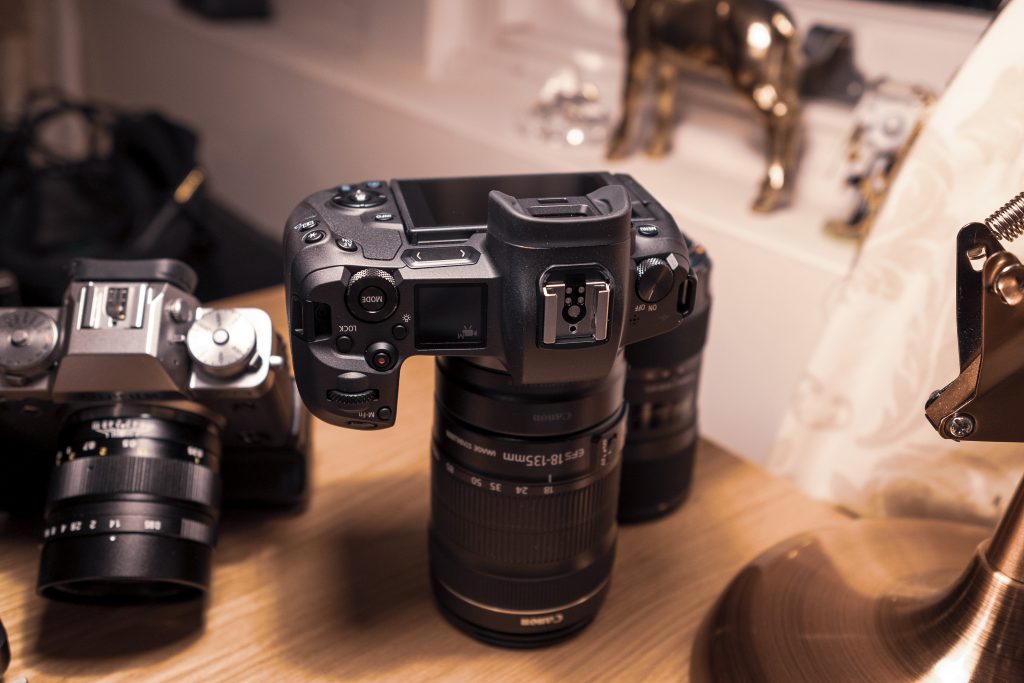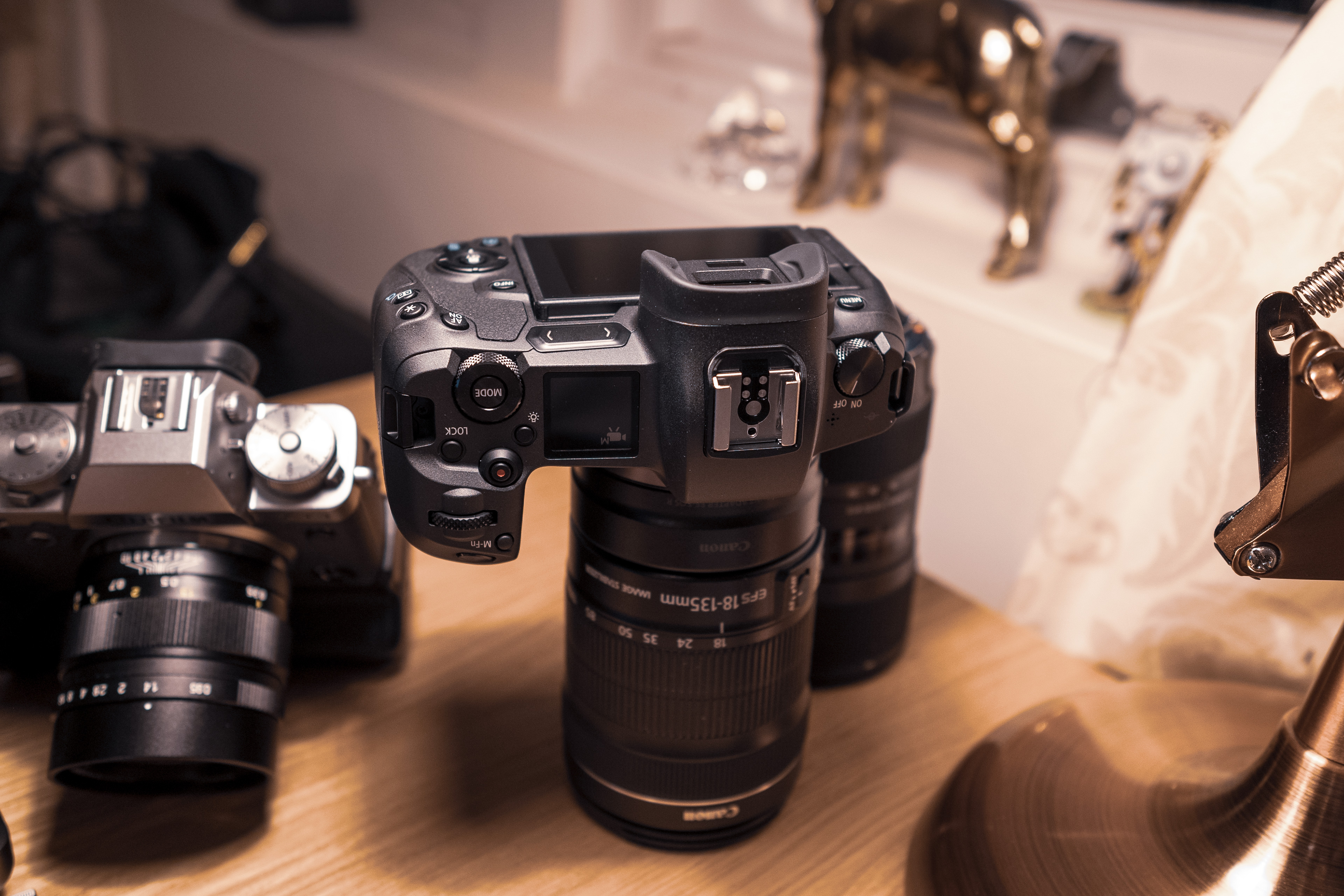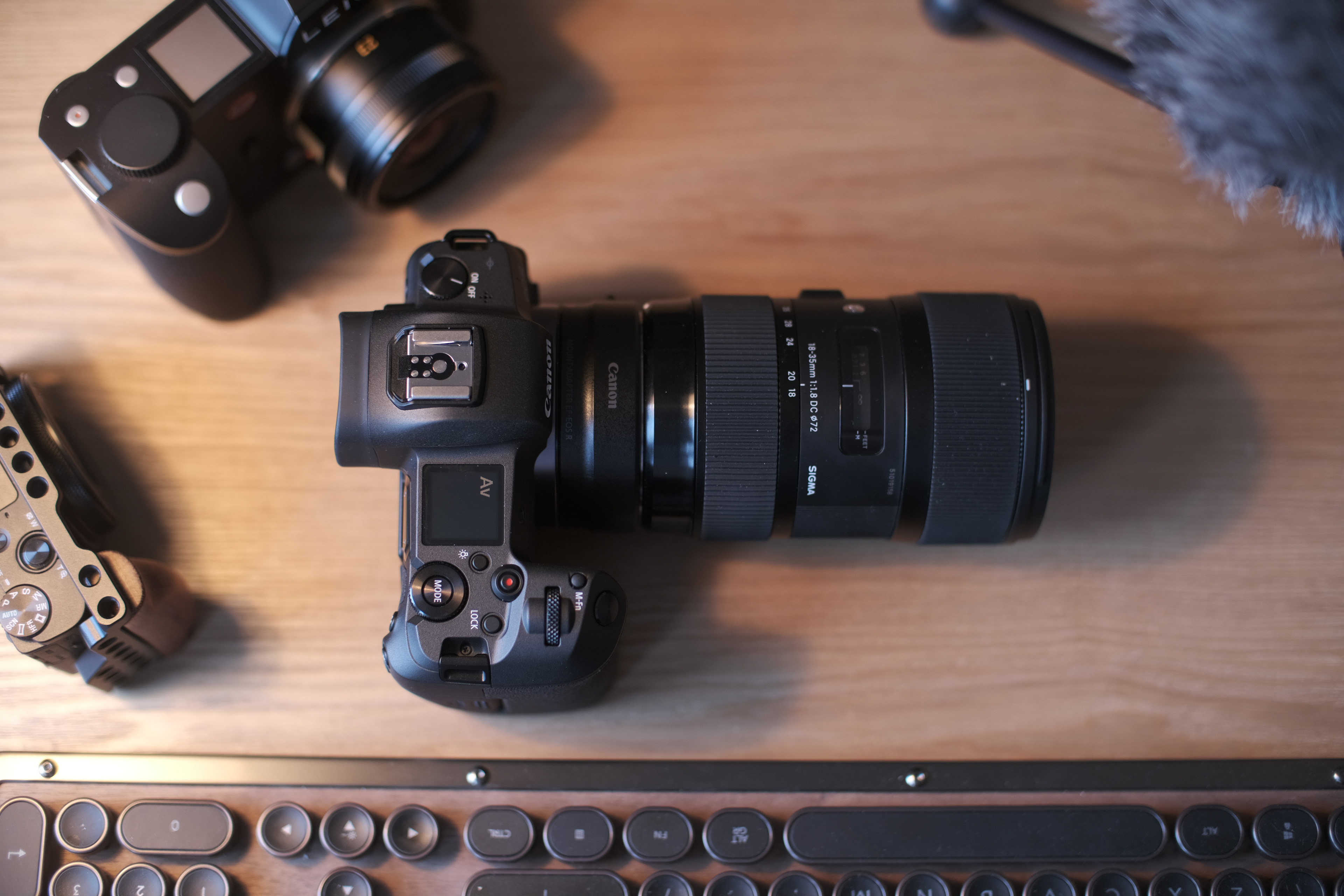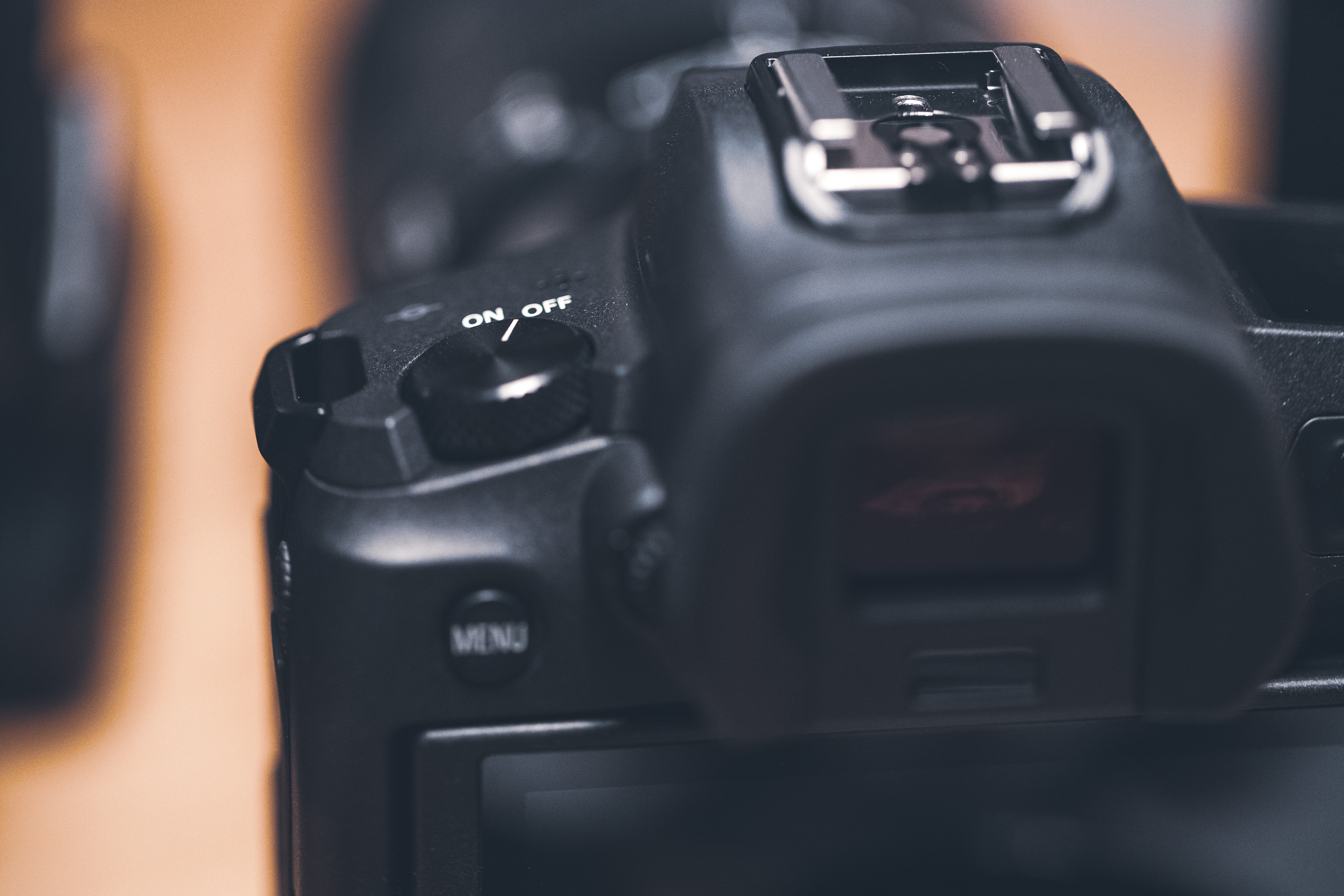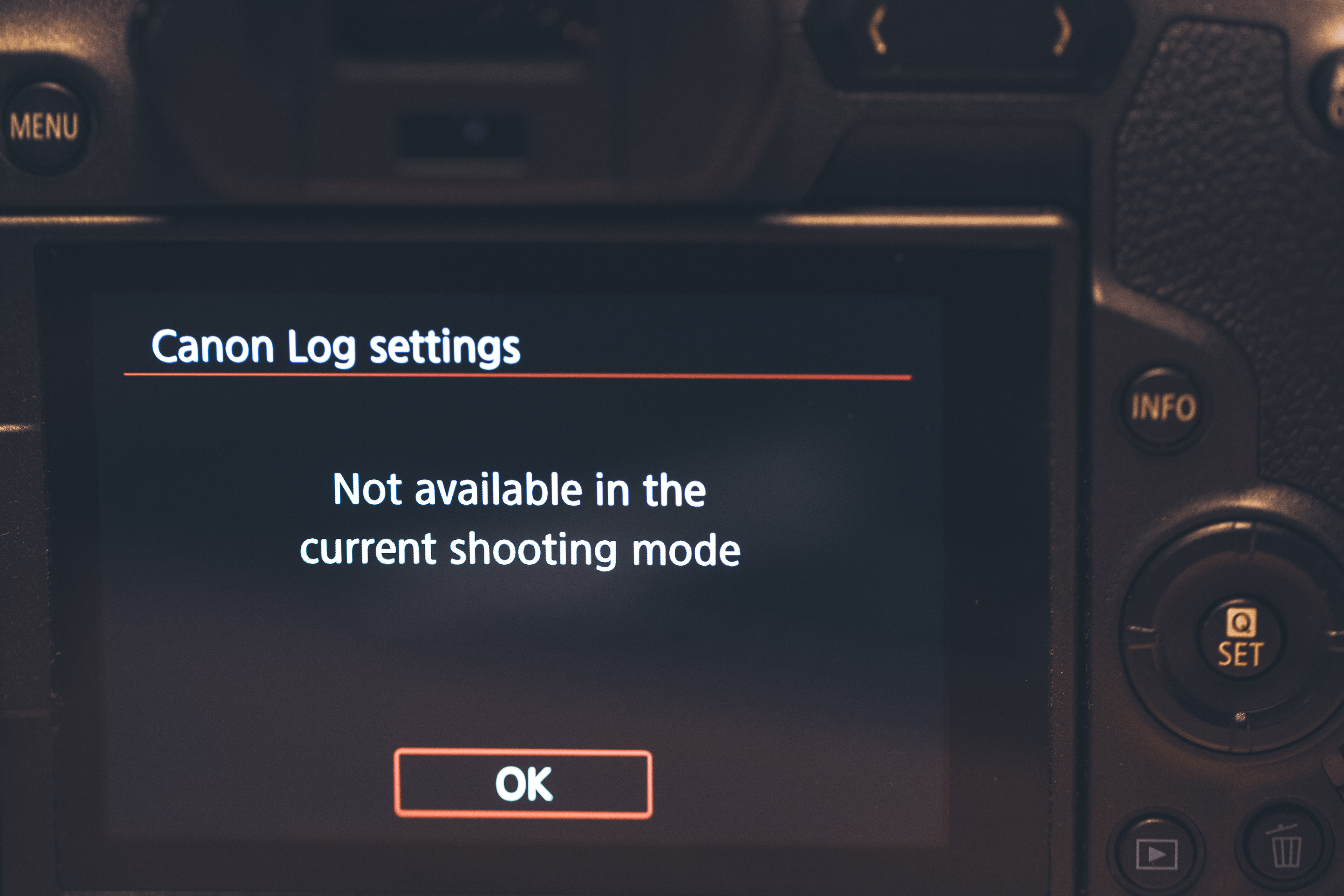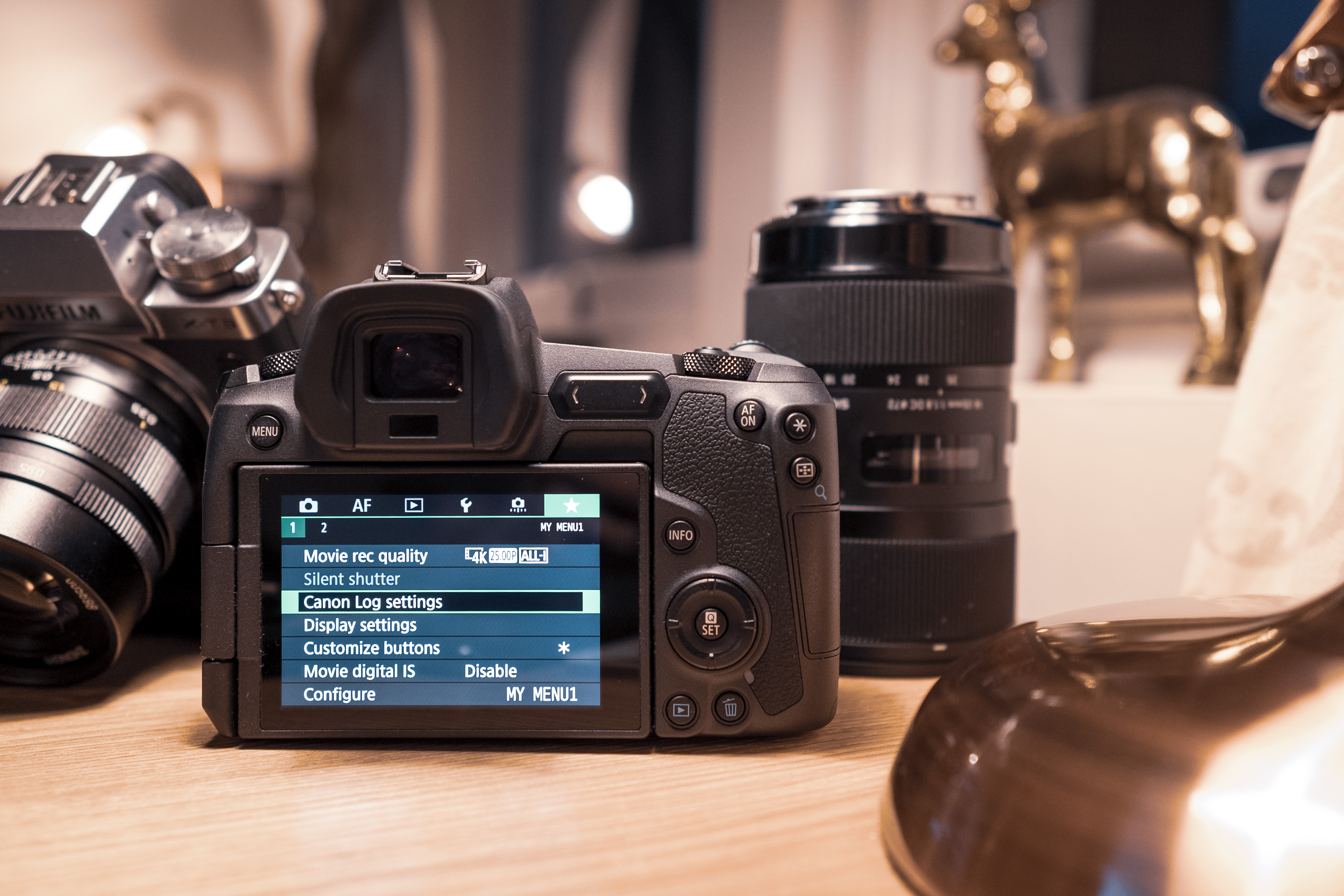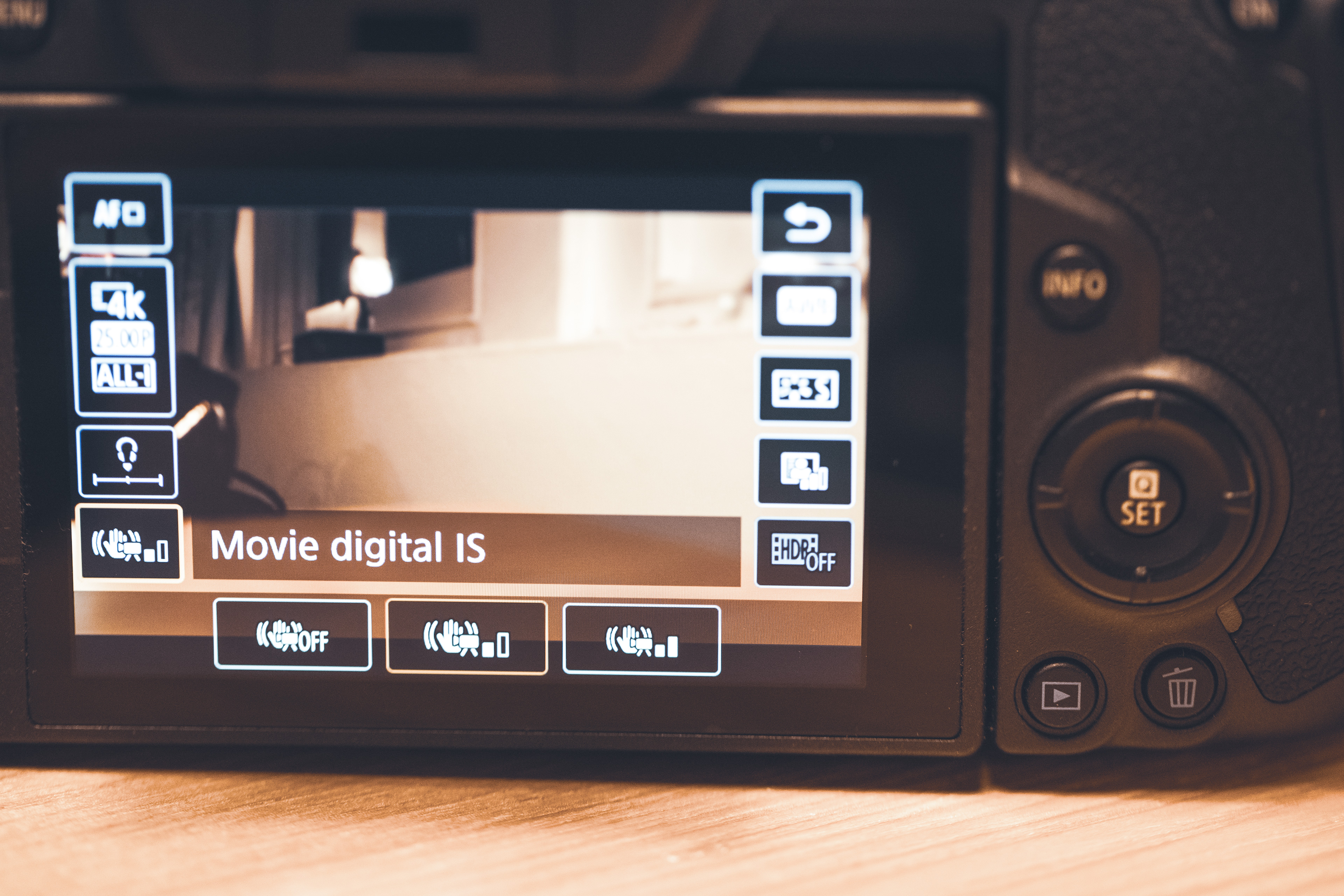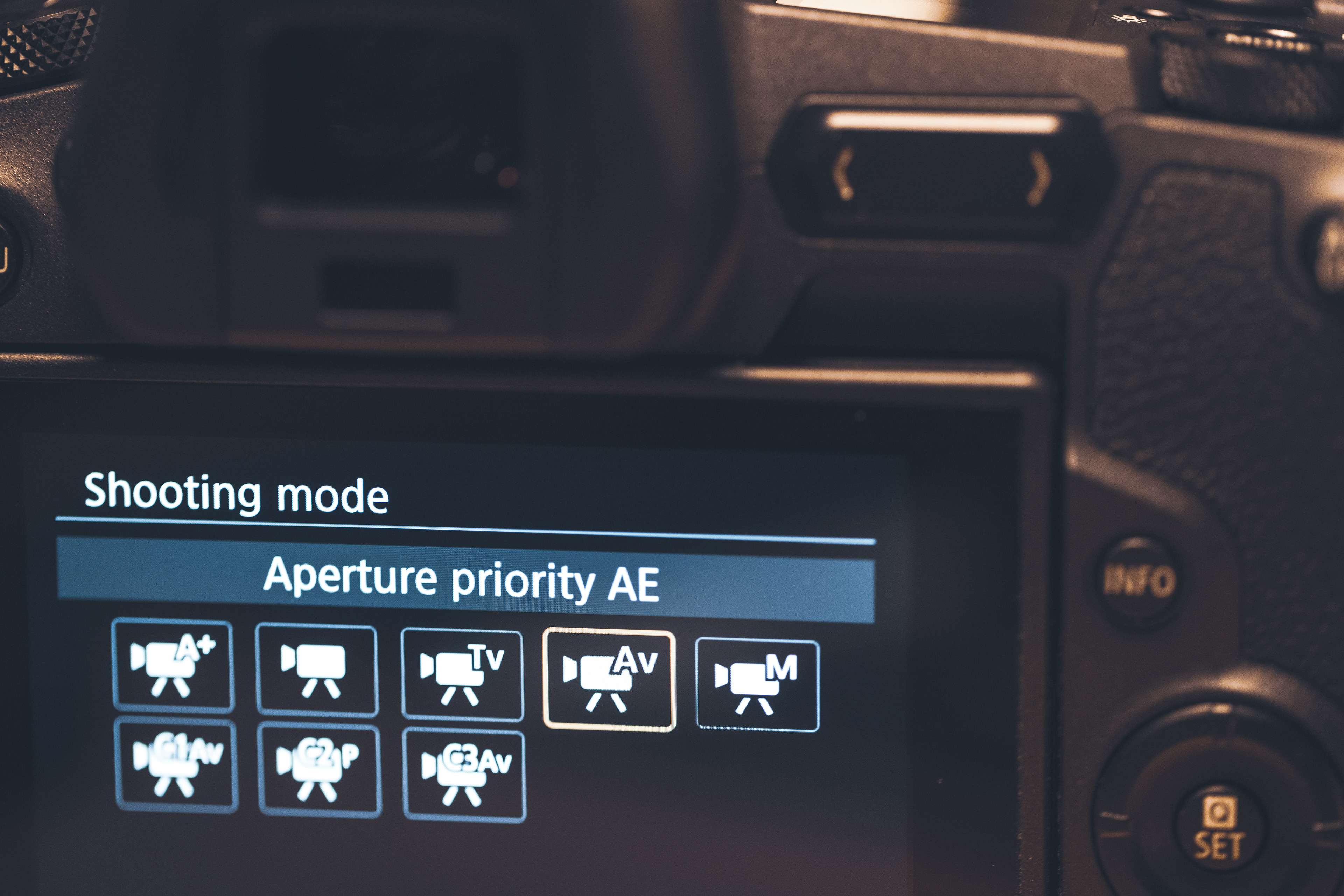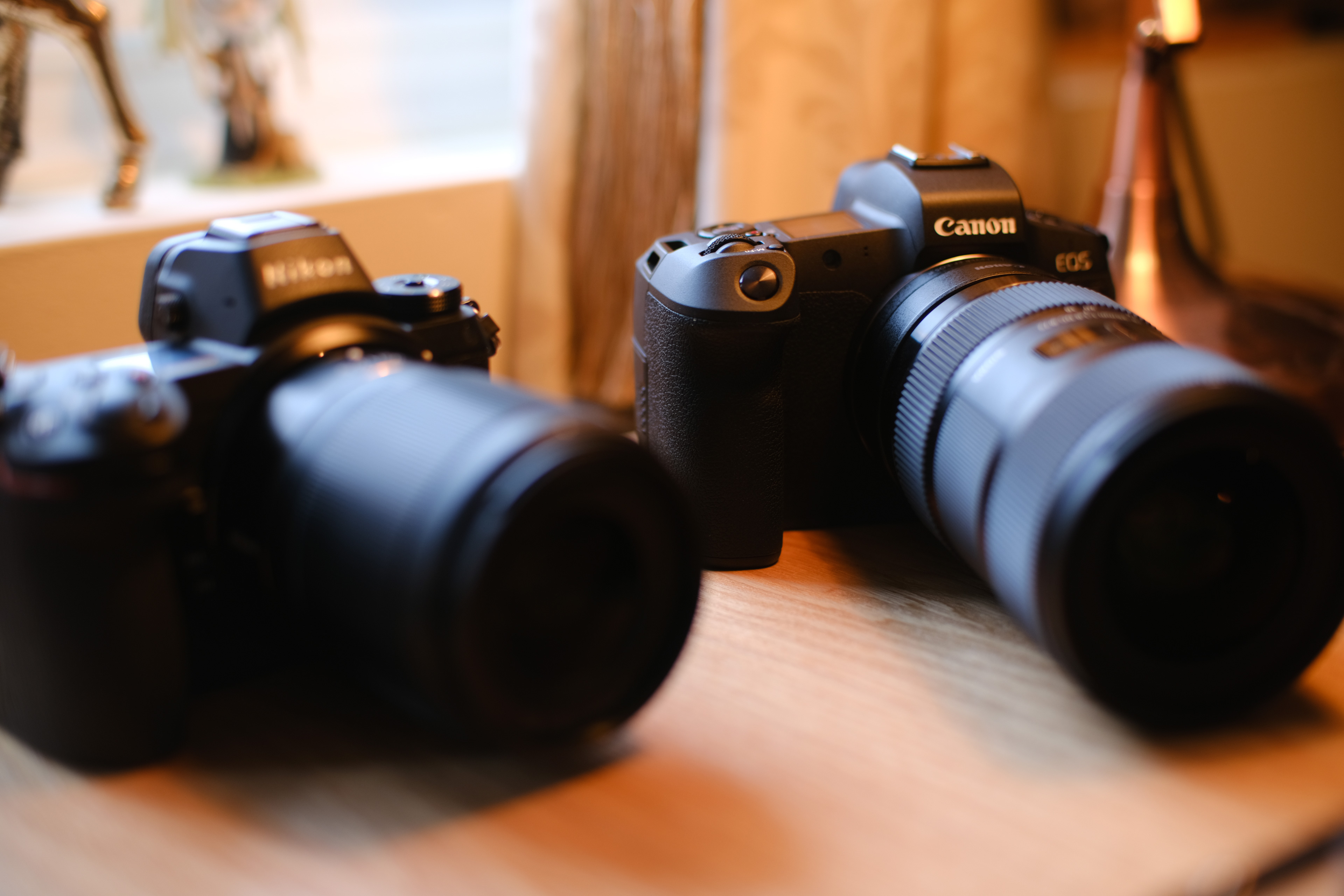
I am perplexed!
Last week I bought an EOS R. I’m surprised it didn’t shred itself on arrival like a Banksy.
This is the camera Canon did not want me to review. If I were in Hawaii I’d have roasted the turkey over a volcano and after seeing the rolling shutter, I might even have thrown it in! There are major flaws with this camera for video. The rolling shutter issues have flown under the radar because most of the camera press did their first EOS R reviews from a swimming pool. I found out about the rolling shutter issues in 4K the hard way… after paying £2350 for one. If you buy this camera make sure it’s from somewhere with a good return policy.
That said, not all the of the video side of this camera is a disaster.
The MOMENT you stop thinking of it as a slightly lame full frame camera, things start to get MUCH BETTER.
Yes you can look at it as an underpowered entry to the full frame mirrorless market and Canon seriously need to update the speed of their silicon. However you can also look at is as Canon’s best 4K APS-C camera to date, with stunning colour science.
Canon’s answer to the X-H1 and GH5S
I won’t talk much about the stills side of this camera. It’s a good offering for photographers. The strategy there is to sell a full frame camera for just $300 to $600 more than a flagship crop sensor camera. However we’re here to analyse video, especially 4K. The quality of the 1080p isn’t better than mediocre by 2012 standards of 1080p so I am not interested in using that side of it unless Magic Lantern bring MLV raw to it. For me, this is a 4K APS-C camera that crops-in a bit more.
When you attach a fantastic APS-C lens like the Sigma 18-35mm F1.8 and put the camera in 1.6x crop mode, it behaves much like a Fuji X-H1. A camera I absolutely adore. Like the X-H1, there is a small additional crop over APS-C when you hit record in 4K. Unlike in full frame mode it’s barely noticeable. In addition, it does something the X-H1 doesn’t. You can shoot full frame 30MP stills in the same camera.
It also benefits from Dual Pixel AF in 4K with Canon glass.
I told it got more interesting…
Ignoring the fact that the EOS R has much worse rolling shutter in 4K than the X-H1 and GH5S, we’re now set to actually produce some very nice images. Sigma 18-35mm F1.8 in hand, 1.6x APS-C mode selected in the menus, 4K ALL-I, Canon LOG, Canon colour. Let’s go…
If we try to this on a Fujifilm X-H1, we’ll need an EF lens adapter and we’d lose the good video AF you get with native lenses. Ditto with the GH5S. These adapters are great but the Canon one has a ‘home advantage’. Then there’s the image itself, which is practically noise-free at ISO 1600 and 3200 in Canon LOG and has the most cinematic colour and tonality this side of a Kodak-powered Leica M9.
And then the wheels come off somewhat.
Canon have removed the stills/movie toggle and replaced it with a multi-function touch bar. Now, we have to press an awkwardly positioned “Mode” button, then an Info button, then the set button, just to change to movie mode or back to stills. If you’re wondering where the mode dial is as well, that’s gone too (only for the space to be occupied by a bizarre on/off wheel).
The trick is to set-up your movie mode just the way you like it and register it to memory as Movie Mode C3. The movie record button activates that mode (C3) whenever you hit the record button in stills mode. If you set the 1.6x crop mode in stills mode you can just live in APS-C all day with that lovely Sigma 18-35mm F1.8 and shoot both video and stills seamlessly like a GH5S. At any time if you want to shoot full frame, all you need to do is put a full frame lens on there and toggle “Full” instead of “1.6x crop” in the quick menu.
I’ve registered Av movie mode (aperture priority) 4K ALL-I to the custom mode C3 which is a very fast way to shoot. Beats having to switch between movie mode and stills mode all day long in a sub-menu.
It’s only a 12MP RAW file in 1.6x crop mode, but that’s like a Super 35mm version of a Panasonic GH5S.
When I am mainly shooting video with a few stills and I won’t need 30 megapixels, that works fine.
If I am shooting mainly stills, I’d switch to the free 5D Mark IV Mirrorless Edition mode – back to full frame 30MP and put your EF lenses on there. I’d say that’s not a bad deal.
If you look at this optimistically, it is a bit like having a C200 with 480Mbit ALL-I. codec and a 5D Mark IV in the same camera.
I am not letting Canon off the hook entirely – because the rolling shutter can be a real problem, and it is plain stupid removing the mode dial and live-view switch. The touch bar is useless. The mode button is badly positioned. And there are some very WEIRD Canon LOG limitations.
Canon LOG limitations
You can’t shoot Canon LOG in Aperture Priority or any semi-auto mode at all. I have no idea why. You can still install EOSHD C-LOG and use that picture profile in any mode you like.
I have only so far been able to get the official Canon LOG option to un-grey itself in the menus when I am in full manual control movie mode. The limitation doesn’t seem to be related to auto ISO or any other settings – it’s the shooting mode. You can assign full manual movie mode to the record button (Movie Mode C3) with Canon LOG enabled. That’s at least a quick way to shoot stills in Standard colour mode and video in LOG, without any menu diving or button mashing. Canon LOG also has a View Assist and you can output it in 10bit via HDMI, internally it is 8bit only.
The other things I enjoyed first off the bat
Let’s try thinking of this camera as a large-chip XC10 with fixed zoom (18-35mm F1.8). Fantastic 4K image quality from a larger sensor than a GH5S. That sounds like an appealing camera, doesn’t it? Throw in the same cinematic mojo in 4K as the classic 1D C, and unlike the Canon XC10 it’s clean at high ISOs and you can put a Canon EF-S 18-135mm IS on it too. That gives you a look similar to a run & gun documentary C200 setup in 4K but for much less money. The image thrashes the hell out of the other Canon EF-S bodies like the 80D and puts the line-skipped 1080p of the 6D Mark II to shame.
Then there’s this little summary list which I drew up, to try and convince me not to throw it from a top floor balcony.
- Canon colour science – it is VERY film like. Still the best out of the box
- The codec is actually surprisingly decent – ALL-I is pretty beefy (very high bitrates) and cinematic on this camera.
- The 4K isn’t over-sharpened – pixel peep it and you’ll think it’s too soft (viewed in normal way, the image is naturally detailed)
- It’s the only full frame mirrorless stills camera where all Canon EF lenses work flawlessly with perfectly reliable AF.
- Compares well to Fuji X-H1 for 4K video, but higher bitrate ALL-I, and Dual Pixel AF / native Canon mount
- Dual Pixel AF certainly works better than the GH5’s autofocus for video.
- Very detailed EVF and screen.
- You can use the 2 extra crop levels of the digital IS modes like a digital tele-converter.
- The standard digital IS mode works well
- I am older with less hair, but finally there is H.264 for 4K rather than MJPEG.
- The articulated screen faces forwards for vloggers AND it has Dual Pixel AF in 4K (unlike the EOS M50).
That last point is quite key. Just by selling a Canon 5D Mk IV WITH a flippy screen and WITHOUT a flippy mirror, Canon knew they would sell a boat load of these to vloggers. That’s because the much more advanced cameras only have a tilt screens which annoys YouTubers. The Nikon Z6/Z7, Sony A7 series, Fuji X-T3, Samsung NX1, upcoming Panasonic S1R and Blackmagic Pocket 4K – all tilt. It’s actually pretty rare you will find the golden trio of forward facing flip screen AND 4K video AND reliable video AF in one box. The Panasonic GH5 doesn’t have reliable enough AF.
By the way, small point, but Canon APS-C is not a 1.5x, but a 1.6x crop. The switch from 1.6x crop to 1.7x crop is much less painful than from full frame. My maths say 1.8x crop but it doesn’t feel like it so maybe Canon are doing a slightly larger 1:1 crop sensor readout than 3840 x 2160 in 4K – maybe 4096 x 2302 (16:9)? In the 5D Mark IV the same sensor does DCI aspect ratio 4096 x 2160 which is 1.74x crop.
The Strange Case of Mr Canon-san
Cameras are not inherently bad or evil or both. The Strange Case of Dr Jekyll and Mr Hyde is relevant to cameras when it comes to people’s response to them and a big part of that response depends on your needs. Everyone is justified to like this camera and everybody is justified equally as much to hate it.
My needs change from moment to moment, shoot to shoot. In one moment I am Dr Jekyll, admiring the virtues of Canon’s colour and 4K through an 18-35mm F1.8 zoom in a camera not much bigger than an XC10. In the next moment, I am Mr Hyde, throwing it into a volcano.
The EOS R still deserves to be thrown in the volcano by Mr Hyde.
Mr Hyde needs not, the dismal rolling shutter performance in 4K. It’s up there with the worst on the market.
Mr Hyde needs not, the very soft 1080p and even worse 720p 120fps (with no AF). This is NOT a competitive camera for slow-mo.
Mr Hyde gets veeeery very angry when he thinks how many completely avoidable ergonomic issues there are with the body…
- That missing stills/movie lever
- That M-fking touch bar
- That 3 presses of 3 separate buttons just to change to video mode (Mode -> Info -> Set, to confirm).
- That in movie mode you can’t shoot a still with main shutter release
- That in stills mode all the movie features vanish from the menus *
- That there’s no Canon LOG in Aperture Priority or Programme Auto mode
- That the HDMI and mic connections stops the screen from fully articulating
- No H.265 codec so 480Mbit ALL-I H.264 file sizes are back up at 4K MJPEG proportions
In terms of the overall shape and layout, Canon have done their usual solid job. When it comes to the finer points, it’s like common sense fled.
The fact you really need APS-C lenses to make use of the 4K but full frame lenses to fully exploit the stills side, leads to a lot of lens changes on a shoot demanding both video and stills. In crop mode you can still shoot stills at 12MP but that’s not why you buy a 30MP full frame camera, is it?
* This means you have to go through the painful Mode -> Info -> Set routine every time you enter the menus to change a movie-related option like Canon LOG, and there’s a limit on what you can assign to function buttons and the quick menu.
Ergonomics – awkward Powershot / DSLR hybrid
On the EOS M APS-C mirrorless cameras, the Powershot team was involved in development and design. It seems like on the EOS R there has been some merging of the Powershot and DSLR design teams as well, and I fail to see how it benefits the EOS R.
The guys who brought you the Powershot G1X and EOS M6, those fugly point & shoot cameras, have clearly had a hand in this camera. Build quality wise, it’s a bit like a Canon/Panasonic G9 hybrid, albeit not $2500 mirrorless standard – more like $1000 ($500 in some aspects).
All this seems to point to the EOS R being a mid-range camera at best, in some ways a low-end point & shoot one, which is not what you expect for $2500. That’s in the same price range as a Nikon Z6, Sony A7 III, Fuji X-H1 or Panasonic GH5S – and actually $800 ABOVE the price of a Fujifilm X-T3.
The camera ships with the touch-bar showing an error message. Just to even enable 4K on the record button in stills mode, you have to know how to dive into the menus and register the custom mode settings and so on. Then you learn of the weird quirks as well along the way like I detailed above, before realising this is NOT your typical well-sorted Canon out of the box like their DSLRs. I guess their new recruits are learning on the job. Personally, I could have done a better job of the ergonomics with my arms folded.
M-fcking bar
The M-fn bar. That M-fcking bar. Turn it OFF. So the idea behind the Fcking bar, is that unlike two buttons side by side or a d-pad, you can swipe across it as well. So if you find tapping a button left or right too challenging or you’ve been doing too much Tinder and can no longer tap, you can now swipe away on your camera too. Swipe right. Swipe left. Ingenious.
Say you have ISO assigned to the M-fcking bar which I don’t recommend, you can tap left or tap right to make small step adjustments, or do a big-old swipe across it to spin that ISO value like the wheel of fortune. Unfortunately where it ends up is anyone’s guess! It’s completely random! Canon may as well have made a mini-game out of it where you actually win a cash prize if it goes to the ISO you actually aimed for.
When you’re not manically swiping left, the touch bar is very easy to accidentally touch. Canon know this, which is why it has a safety lock which makes it even more annoying when you actually want to use it.
Micro Four Thirds lenses on a Canon EOS R?
There will never be an adapter for manual focus Micro Four Thirds lenses like the Voigtlander 10.5mm F0.95 because the EOS R flange is longer (20mm vs 19.24mm), enough to kill infinity focus. I am sure Canon purposefully did that to stop people adapting Micro Four Thirds lenses. That’s a shame as lenses like those from SLR Magic and Voigtlander are a perfect match for the 1.8x crop 4K.
The Panasonic GH5S is also a 1.8x crop in 4K and I never complain it because of the HUGE ecosystem of adapters, Speed Boosters and well-priced lenses to support that particular sensor size. A Voigtlander or SLR Magic lens at F0.95 really does give you that full frame F2.0 look. So it is NOT the crop factor ALONE that’s the deal-breaker but the small number of EF lenses to really make use of it.
I fully expect a thriving eco-system of adapters and Speed Boosters for EOS R mount, by which time matters will improve….I can’t wait to see the first Speed Booster for it, perhaps from Kipon or Metabones.
Conclusion – here’s the deal
I need to see a bit more generosity and goodwill towards their customers from Canon. They are making too many mistakes. They don’t talk to us enough and they don’t reach out. They know their past customer, they don’t know their current ones.
I think when the EOS R was sketched out (5D Mark IV sensor), the past customers were 90% stills orientated. Now it is probably even 50-50 video and stills and they don’t seem to have the right sensor for that.
There are signs Canon no longer has the golden sales touch. Rewind to the 7D and T2i. These APS-C Canons shot a LOT of film work. Some of it ended up on the big screen. George Lucas. Canon marketing man’s dream. Then Canon’s marketing men all wet their pants after seeing the impact on the small chip pro camcorder sales. Then, when the Cinema EOS C300 came out, the specs on paper were so poor even by 2011 standards we all wet ourselves laughing… But the image was no joke. Everyone and his cat loved the film-like pop and butterly smooth low-light performance. It convinced pros to go with the system and keep their investment in EF lenses. Easy decision. From this point on, Sony and Panasonic had a mountain to climb.
Well hear this Canon…
I will not buy a single EOS R lens.
The crop in 4K simply killed Canon’s full frame lens line-up for me. If they are in the business of not selling lenses they have succeeded admirably. Let’s be clear. I will buy what I need. I do not need full frame glass for 1.8x crop 4K. I don’t have a weird Canon vendetta, I just want to spend my money wisely. I love my Canon 1D C and C500. These still have THE best cinematic 4K mojo 6 years later, but Canon make it UNNECESSARILY difficult to love what should be the best cameras in the world. They do things like cancel the 1D C concept after saddling it with MJPEG and zero firmware updates even for peaking – then bring out a 1D X Mark II with 4K/60p but no Canon LOG. They are capable of making faster sensors, so why let the EOS R down so badly with awful rolling shutter distortion from a slow 3 year old chip?
By no means is this a full review but I can already see why this is such a divisive camera already after a few days of using one. Even with Canon early-adopters. It is nice to have the choice of crop-mode on a full frame camera – rather than be forced into it. You just might not have the lenses to match. You might have just spent $3000 on a 28-70 F2.0, in which case – an optic is wasted in 4K on this.
Canon may have saved some money by using the old sensor but what they have gained, surely they have lost in the lens sales to video shooters. That is unless people rush out and buy a lot of EF-S lenses like the 10-18mm. I am not going to. I prefer the look of a fast aperture prime, at least F2 and to step back from the subject – but not every time is that viable.
So the paradox with the EOS R is that it’s both a good deal and a bad one in the same moment.
As part of the good deal you get C200 quality image (with a beefier codec in fact) in the body of a mirrorless 5D Mark IV, which now costs $2300 instead of the $11,000 cost of buying a C200 and 5D Mark IV separately. Of course it doesn’t have the audio-side of a C200, or the optical-viewfinder and responsiveness of a 5D Mark IV, but in terms of the end results it’s right up there with both cameras and the slot-in ND filter is fantastic. You don’t have to change the entire adapter when you want to shoot clear, just pull the filter out.
You could also look at it as a Canon “GH5S” as well. That has no IBIS either. That has a 1.86x crop 4K image. That has a very high-bitrate ALL I codec as well. That has a fully articulated flippy screen too. Where the Canon beats the GH5S is in autofocus. Where the GH5S beats the Canon is in rolling shutter – and not by a small margin. Of course it does 10bit internally and much more in the way of higher frame rates as well. The EOS R is a joke for slow-mo.
Where the EOS R is a bad deal…It has a seriously slow chipset, and a very slow sensor. It isn’t capable of full frame 4K like the similarly priced Sony A7 III or Nikon Z6. Since 2014, Sony has been doing full frame 4K with the A7R II and since 2015 with the A7S II. The EOS R is a 2018 camera and the 30 megapixel count isn’t an excuse. Samsung at 28 megapixels – full-width 4K since 2014. Sony at 42 megapixels – again full width (albeit with pixel binning).
The Fuji X-H1 is cheaper and packs IBIS, dual card slots and 1080/120p. The lenses are cheaper too, and better suited to cropped-in 4K. The X-T3 is a full $800 cheaper and does 4K/60p 10bit!! Even the old 2014 vintage Samsung NX1 is superior on a technology level to the EOS R, with that 6K sensor output and fantastic ahead of it’s time H.265 codec.
So where is Canon’s goodwill?
It really is a Dr Jekyll and Mr Hyde camera.
I can say in all my experience with almost every camera on the market, there has never been a greater contrast between the Pros and Cons list below.
Pros
- 4K as close to Super 35mm as makes no difference – slight extra crop between 1.6x crop stills and 4K but nothing bothersome
- Better 4K codec than the C200 – ALL-I mode very impressive quality (large file sizes though)
- Enable Canon LOG and you wouldn’t know you were working with 8bit material – it’s very cinematic
- Dual Pixel AF in 4K
- Great EVF
- Just so happens to be a full frame sensor in there if you’d like to swap from your Sigma 18-35mm F1.8 to an EF 50mm F1.2L sir
- Digital IS actually works rather well, sir!
- Useful top LCD
- Fully articulated screen great for vloggers
- Small and light
- EF lenses work at their most reliably on any mirrorless camera
- GREAT colour and ‘mojo’ to the look in 4K
Cons
- F**ING Rolling Sutter – it’s SO bad in 4K – will ruin shots
- The 720/120fps is bullshit
- M-fking touch bar
- No in-body stabilisation like on almost ALL the competition
- Expensive native lenses that can’t be used on anything else but a mid-range camera YET
- No Canon LOG in any auto mode, not even in Av. WHYYYYY (smashes a window)
- Single card slot not reliable for a lot of pro work (takes to Internet forum)
- Stupid ergonomic decisions like missing joystick, missing live-view switch, no mode dial, 3 presses to toggle mode
- Competition is technically FAR in advance on CPU and CMOS speeds (screams with rage, jumps from high ledge)
Hmm. But it’s not as simple as just the camera body.
The Nikon, Fuji, Panasonic and Sony cameras require is a BIG ask from you. A BIG investment in their NATIVE lenses. They’re not cheap. They’re not cross-platform.
If you don’t own many Canon lenses all you need to buy is a Sigma 18-35mm F1.8 to do most things – the cost goes past $3000 but it can easily creep past $8000 on the Sony and Nikon side. I just can’t help feeling that Canon lost a lot of lens sales with that crop, when all you need to buy is a single Sigma zoom and maybe one of their ART primes.
Versus Nikon Z6 and Z7
I also can’t help feeling that the Nikon Z6 might be a better buy in a number of ways for video. In terms of technology the Z6 and Z7 are obviously superior to the EOS R. When the Z6 is released next month it will be the same price as the EOS R and practically identical in spec to the Z7 which is a near-$4000 professional camera. Sony forced their hand. With Nikon you get to actually choose whether you want the mid-range body or the high-end body and with Canon you don’t. Thanks to Sony’s aggressive strategy, there’s not a lot of difference between them either – just like the A7 III and A7R III.
Many more of the finer details of how the camera operates are better thought out on the Z7 and switching between stills/video on the fly is completely fluid.
The Z7 does NOT crop in full frame 4K even from 46MP – that is an 8K sensor – and far less rolling shutter. Go and figure on that one 🙂 It has supersampled 1.5x crop Super 35mm 4K in addition and the autofocus is superb – even with Nikon F mount lenses. The Nikon Z7 is also a flat out better camera than the Sony A7R III – better image, better colour, better menus, better ergonomics, better EVF, better media and more responsive. The A7R III was already VERY capable to begin with.
So once you have spent upward of $3000 kitting out a lower-specced EOS R, you may ask why you didn’t spent it on a Nikon instead or wait for the Panasonic S1?
Believe it or not there are valid reasons…
- You own Canon glass and Dual Pixel AF “just works”
- You don’t trust lens adapters for pro work
- You are not prepared to spend thousands on Panasonic SL mount or Z mount lenses
- You love what you get from Canon’s colour science and Canon LOG, even in 8bit
- You like the choice of a THICK ALL-I codec at 480Mbit or an 120Mbit IPB option
- You may have a 5D Mark IV to sell and consider the EOS R a worthy replacement with same image quality at a lower price
- You are a Canon fan boy!
- You don’t care about a 1.7x or 1.8x crop
That last point is more widely applied to people than pixel peepers expect. A lot of users just don’t mind. It’s only a small crop compared to Super 35mm which is a Hollywood gold standard of filming and a free 5D Mark IV thrown in for good measure with most of the downsides of that more expensive camera eliminated. No more MJPEG. Finally an articulated screen. Finally, a smaller and lighter body with no flappy mirror.
Finally, here are the questions you should ask yourself before buying an EOS R:
Does this shoot benefit from a full frame 4K look? Or am I happy getting the shot with my Sigma 18-35mm F1.8 and impressive colour / codec performance?
Do I need high quality slow-mo? (If so look elsewhere!)
Am I prepared to invest in Sony’s full frame lenses or can I have just as much fun looking through a fantastic EVF at a beautiful custom Canon picture style? Bearing in mind what you see through that EVF is some of the most filmic 4K/24p on the market at C200 rivalling quality.
Do I need to avoid rolling shutter distortion for this sequence? Or is bullet-proof autofocus tracking going to add more to the action?
You see the dilemma! All the criticism of crap 120p quality, rubbish rolling shutter performance and non-full frame 4K are absolutely valid but they are NOT the whole story. Perhaps my biggest criticism of this camera is that it’s a cash-grab on early adopter pros, with a limited shelf life, because as soon as they bring out a higher-spec EOS R2 with better video, we’ll have to buy that instead.
Cannibalising the C200 and 5D Mark IV?
So if it shoots as nice 4K as the C200 with higher bitrates and shoots as good stills as the 5D Mark IV, who wants to spend a combined $11,000 on those when you can spend $2300 on an EOS R?
It’s a good question and it probably kept Canon awake at night thinking of all those stupid features like 3 button presses to get into movie mode.
It doesn’t cannibalise the C200 or 5D Mark IV if you make a living shooting video on critical paid work.
It has WAY too much rolling shutter to replace a professional video camera for all those mission critical situations. Canon know this.
It’s a good second camera for pros who understand the limitations.
As for the 5D Mark IV, it comes down to how fast a shooter needs to work. The EOS R is more laggy without an OVF and AF can sometimes be less reliable, but it doesn’t have a live-view blank-out taking a still, or mirror flip, so that’s something. It doesn’t have two card slots. It’s more a consumer camera, with pro-level image quality. The EOS R is not the fastest or most responsive full frame camera. The 1D X Mark II is. The EOS R is not he best built or the most reliable and robust. The 1D X Mark II is.
If Canon gets serious with a higher-end model, only then will we see a larger switch of people from 5D Mark IV, 1D X Mark II and Cinema EOS cameras to a ‘do-everything’ mirrorless beast… and even then, WILL CANON LET IT HAPPEN??
A slow trickle out of slightly evolved and slightly more current models are more likely. What they did with this camera, more than anything else, was establish a new mount, a new system and new lenses that were only possible to do with a short flange.
Now third parties can get to work on Speed Boosters and lens adapters. Canon can get to work on a high-end body which addresses the video limitations. I think a subsequent high-end model is a BIG opportunity to get things really right, although it will probably be $4000. You could say Canon chose aggressive pricing with this first model over the high-end pro video specs found in the competition (X-T3, Z6, A7 III)… but you’ve surely noticed rivals do BOTH.




